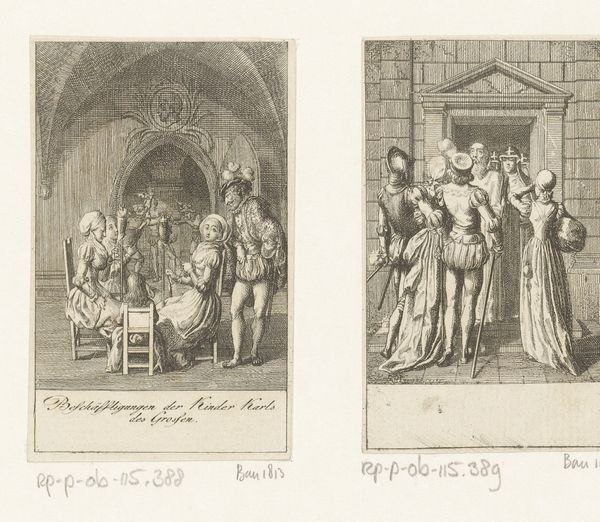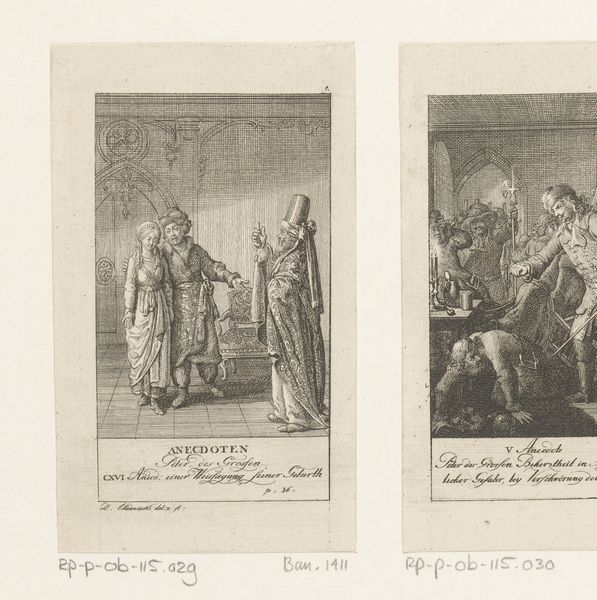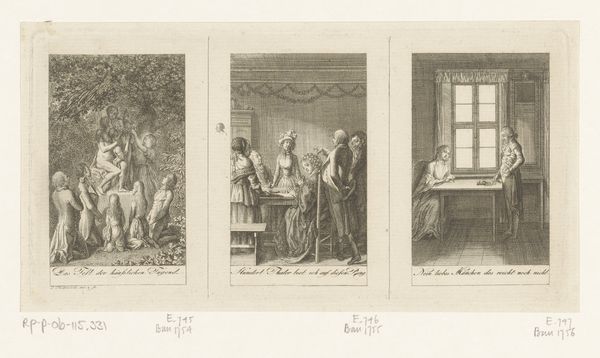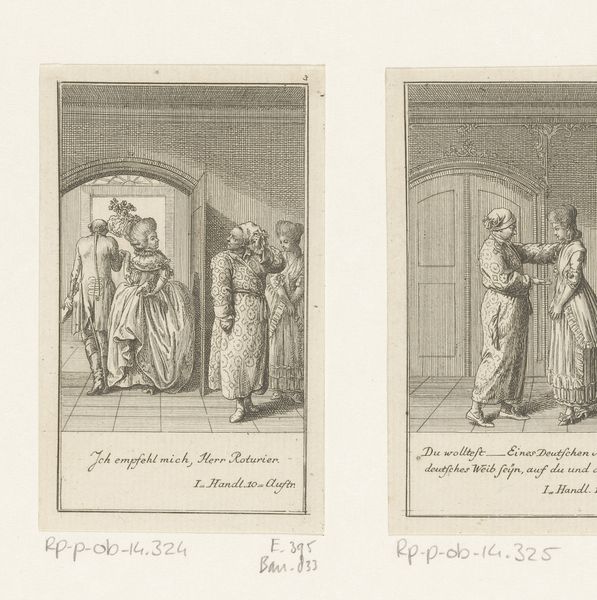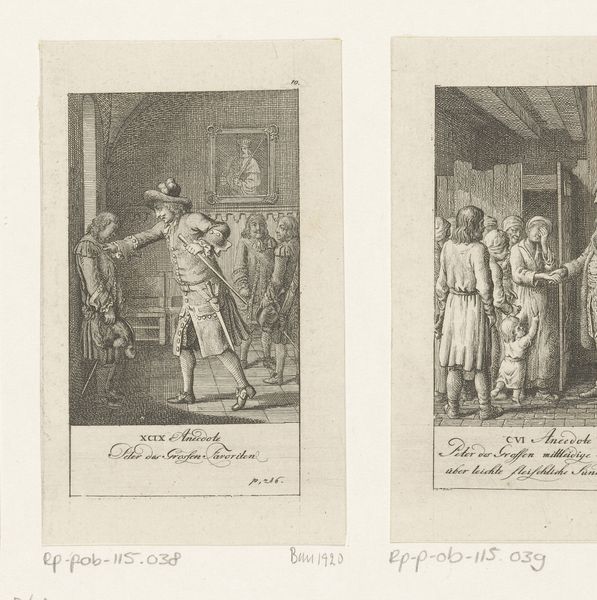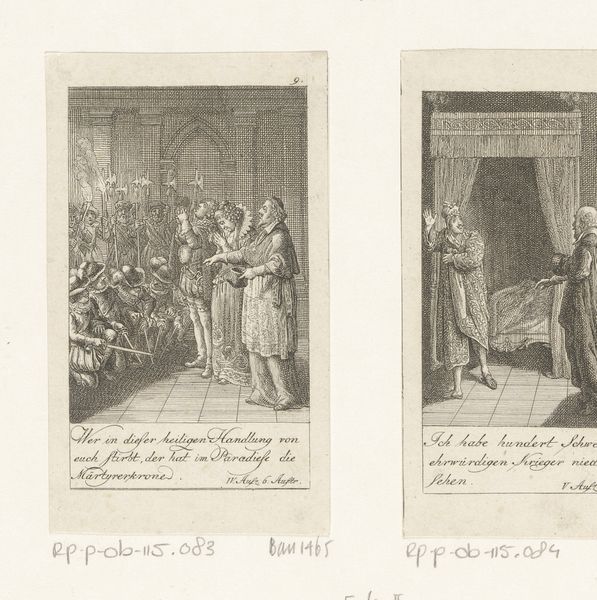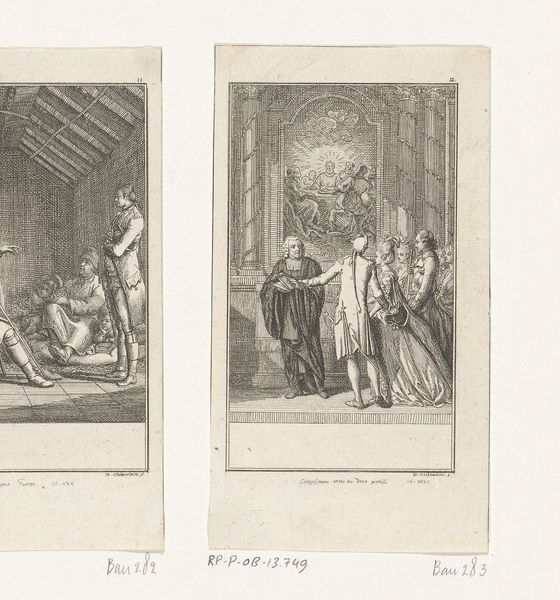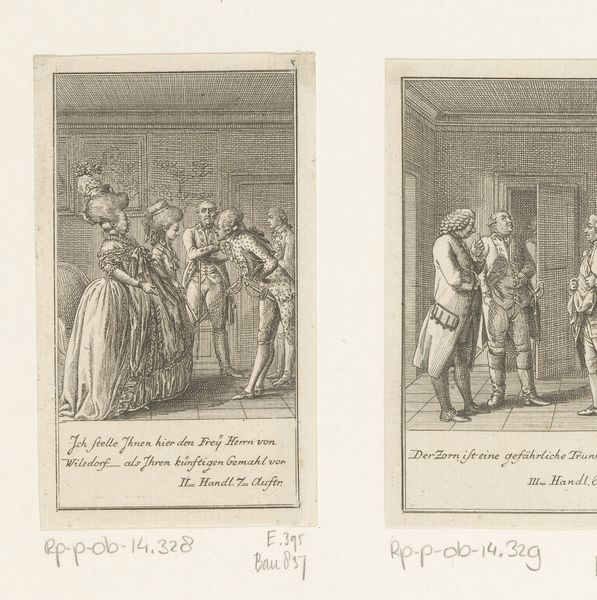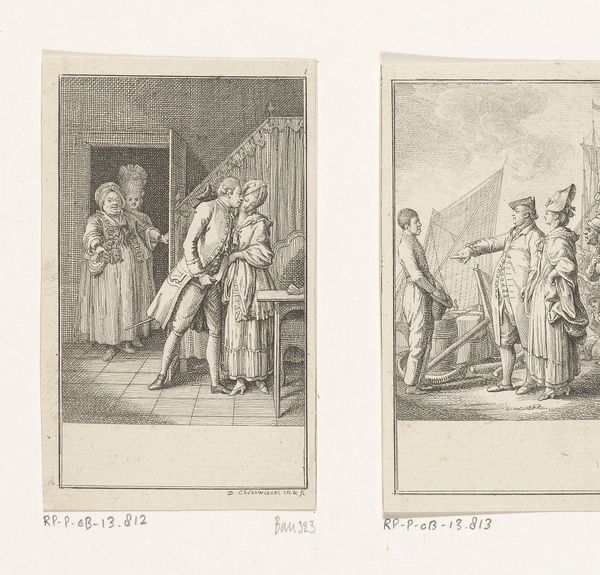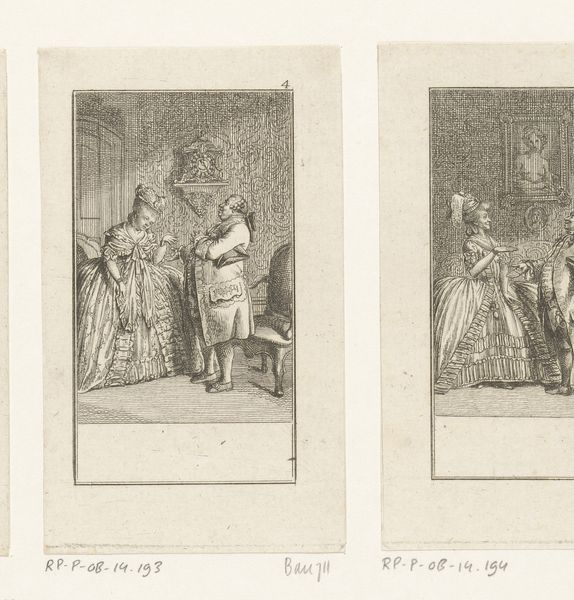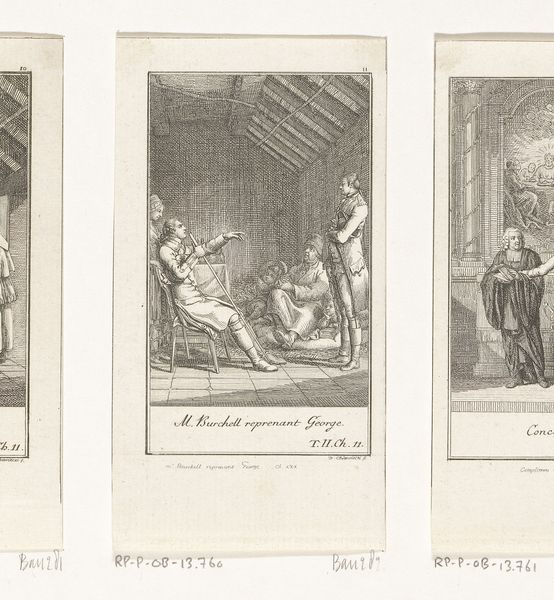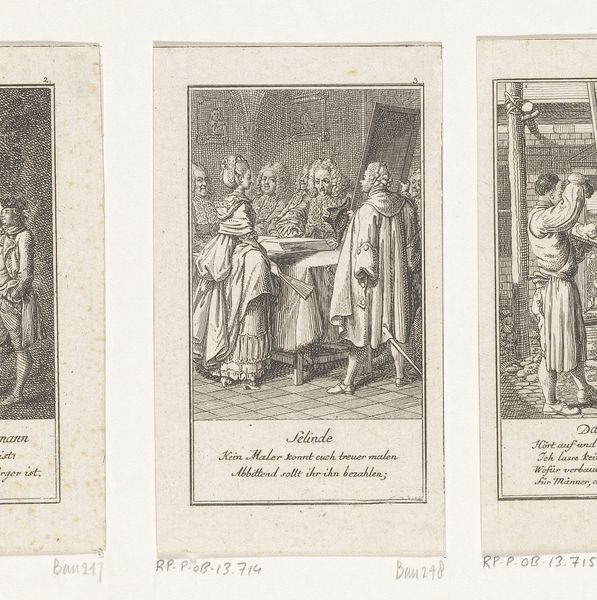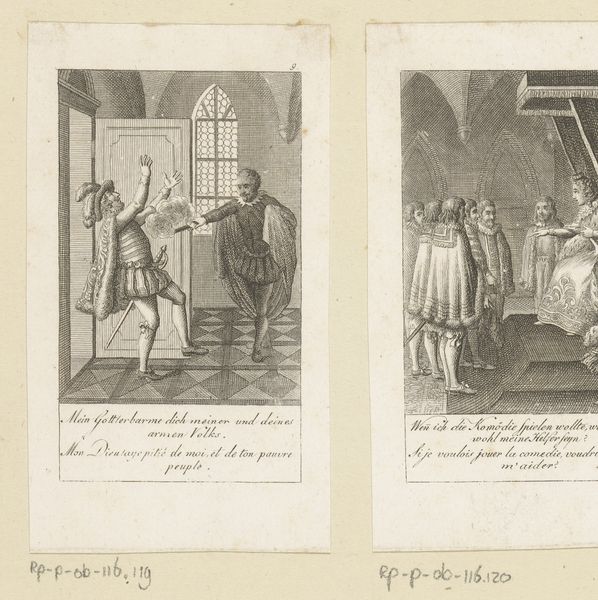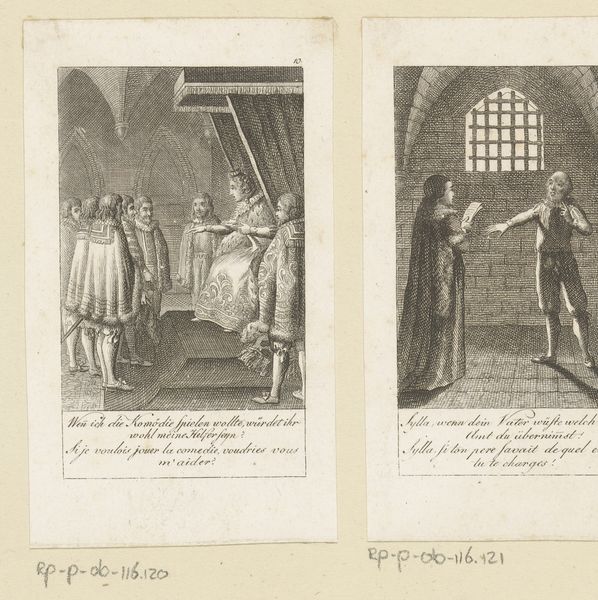
Philippine Welser knielt voor Ferdinand II van Tirol 1791
0:00
0:00
print, engraving
#
portrait
#
narrative-art
# print
#
history-painting
#
engraving
Dimensions: height 99 mm, width 62 mm
Copyright: Rijks Museum: Open Domain
Editor: This is "Philippine Welser kneeling before Ferdinand II of Tyrol," an engraving by Daniel Nikolaus Chodowiecki from 1791. I find it fascinating how this relatively small print tries to capture such a grand historical moment. What's your take on it? Curator: It’s interesting to consider this work through the lens of its historical context and the rise of public opinion. Prints like these, particularly in the late 18th century, played a vital role in shaping narratives and public perceptions of historical events and figures. Chodowiecki here isn't just depicting a scene; he’s participating in a broader cultural project of constructing history for a burgeoning public audience. What aspects of the composition do you think contribute to this narrative construction? Editor: Well, the positioning of Philippine, kneeling, immediately sets up a power dynamic. Ferdinand stands tall, in armor, literally looking down on her. It's a clear visual statement about their relative positions in society, right? Curator: Precisely! And that's a key point. Chodowiecki uses a familiar visual language to communicate complex social relationships. This wasn't just a depiction of a marriage, but a visual argument about legitimacy and the power structures of the time. Think about where these prints were circulated – how did they function within the developing public sphere? Editor: So, these prints weren’t just art; they were political tools in a way? Little reproducible political narratives. I never thought of them that way. Curator: Exactly! And that's the crucial thing to remember when we study art. It is often interwoven with social and political contexts. The very act of choosing this scene and distributing it widely suggests an investment in a particular interpretation of history and power. Editor: Wow, I'll definitely look at prints differently now. It's amazing to consider the artist as an active participant in shaping public opinion! Curator: And the distribution and reception of art! I see it not as simple beautiful objects but actively engaging and reinforcing dominant socio-cultural assumptions and hierarchies. Always look behind the image!
Comments
No comments
Be the first to comment and join the conversation on the ultimate creative platform.
